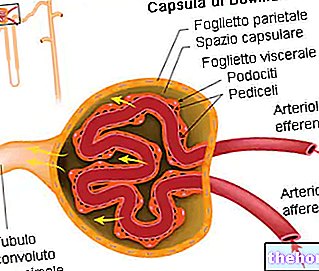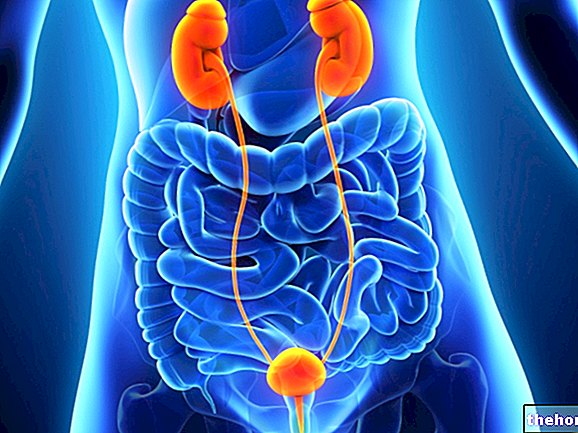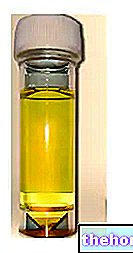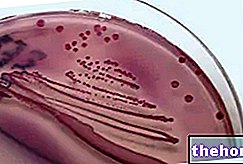Generality
Polycystic kidney is a genetic disorder in which normal kidney tissue is replaced by numerous cysts. There are two different forms: one affects adults, the other infants.
In polycystic kidney patients, kidney damage impairs the normal function of these organs.

So is the polycystic kidney
Polycystic kidney is an inherited disease characterized by the appearance of numerous cysts in both kidneys.
The formation of cysts impairs kidney function, leading to a pathological condition called kidney failure. The medical term "kidney failure" indicates defects of:
- Glomerular filtration.
- Urine concentration.
- Urine excretion.
Pathological anatomy
Cysts are sacs lined with kidney epithelium and containing fluid. In the case of polycystic kidney, their presence increases the weight and size of the organ (even three or four times the normal size). The doctor can detect these anatomical alterations by palpating the areas corresponding to the kidneys.
The size of the cysts is variable: they can measure a few tens of millimeters, or even 4-5 centimeters. They invade the areas occupied by the glomerulus and the proximal and distal tubules. This explains why they fill with liquid, especially pre-urine, containing:
- Urea.
- Sodium.
- Chlorine.
- Potassium.
- Phosphates.
- Creatinine.
- Glucose.
The cysts appear on both kidneys and can be several dozen, even a hundred.
Classification
Polycystic kidney is a genetic disease. According to the gene involved, two forms are distinguished:
- Autosomal dominant polycystic kidney. The English acronym is ADPKD. It is present from birth, but manifests itself with symptoms in adulthood, starting from 30-40 years.
- Autosomal recessive polycystic kidney. The English acronym is ARPKD. It occurs in the first months of life. Often the baby dies after delivery, or within the first year of life. The baby develops the first kidney cysts already in the maternal uterus.
Epidemiology
Causes
A genetic mutation causes polycystic kidney.
The dominant form, ADPKD, can be caused by two different genes: PKD 1 and PKD 2. PKD 1 resides on chromosome 16, while PKD 2 resides on chromosome 4. Despite this, they cause the same pathology, with the same symptoms.
The recessive form, ARPKD, is caused by a single gene: PKHD 1. PKHD 1 is located on chromosome 6.
Pathogenesis
The mechanism is very complex and involves many actors.
PKD 1, PKD 2 and PKHD 1 genes encode proteins called polycystins. Polycystins make up a channel for the passage of the calcium ion across cell membranes. The calcium ion is an important signal messenger for the cell. In other words, calcium, when it enters a cell, triggers numerous cellular changes. When the polycystins are mutated, the channel does not function properly and the calcium-induced signal is altered. All this results in the formation of cysts.
Inheritance of the polycystic kidney
Premise: each human DNA gene is present in two copies. A copy comes from the mother, a copy from the father. Such copies are called alleles.
In all autosomal dominant inherited diseases it is sufficient for one allele to be mutated for the gene to fail. The mutated allele, in fact, has more power than the healthy one (dominance). For the transmission of the allele, only one parent with a mutated allele is enough.
Conversely, in all autosomal recessive inherited diseases both alleles must be mutated for the disease to occur. The mutated allele, in fact, has less power than the healthy one and its presence in a single copy has no effect (recessivity). For the transmission of these diseases, both parents must be carriers of a mutated allele (healthy carriers) .
Autosomal inherited diseases are those in which gene mutations reside in non-sex chromosomes. As mentioned, polycystic kidney is an autosomal hereditary disease, which exists in two forms, a dominant (late onset) and a recessive (more severe).
Symptoms and complications
- The dominant form ADPKD does not show symptoms until adulthood. The first kidney problems usually appear between the ages of 30 and 50. It is therefore a slow-moving degeneration.
- The ARPKD recessive form occurs soon after birth and has a rapid and fatal course.
The different phases, early and late, of the disease are characterized by the following symptoms:
The pain in the areas corresponding to the two kidneys is due to their enlargement, which compresses the surrounding anatomical parts.
Kidney stones occur in one in every 5 people with ADPKD polycystic kidney. In some cases, they do not cause pain; in others, they block the ureter and cause acute pain (renal colic).
A late diagnosis and failure to cure these symptoms can complicate the pathological picture of the patient affected by renal polycystosis. The most serious complications are:
- Chronic renal failure.
- Chronic hypertension.
- Cysts in other parts of the body.
- Valvulopathies.
- Brain aneurysm.
- Chronic kidney pain.
- Diverticular disease of the colon.
- Problems in pregnancy.
Kidney failure
It is the most common complication in polycystic kidney patients.
In a patient with renal insufficiency, the main functions of the kidneys are impaired.
Kidney damage can be more or less profound. The glomerular filtration evaluation test, in fact, allows to evaluate the stage of renal insufficiency. Five stages have been distinguished, from the least severe to the most severe.
2
3
5
The last stage requires therapeutic treatments, such as dialysis and kidney transplantation.
Chronic hypertension
Through urinary excretion, the kidneys regulate blood pressure; damage to them, on the other hand, raises its value. Hypertension is not a disease in itself, but is a contributing factor to heart disease and stroke.
Cysts in other parts of the body
Cysts also develop in other organs, such as the liver. They do not cause liver problems, but they do cause pain. Liver cysts are typical of old age.
Other cysts can appear in the pancreas, seminal bladder and arachnoid membrane.
Brain aneurysm
The term aneurysm indicates the dilation of a portion of the blood vessel. One in 10 people with ADPKD polycystic kidney develops an aneurysm in a "cerebral artery. Usually this condition does not cause any discomfort to the patient, but the risk of the aneurysm rupturing should not be underestimated. The rupture of the affected vessel, in fact, causes bleeding, with invasion of the areas surrounding the point of leakage (see in-depth analysis on "cerebral haemorrhage). Particular attention should be paid to those who, affected by ADPKD, also have a family history of aneurysm. L" aneurysm, in fact, is very often hereditary.
Valvulopathies
Mitral valve prolapse occurs in one in five patients with ADPKD.
Chronic pain
The polycystic kidney can have as many as a hundred cysts. In such conditions, the kidney is also 3 or 4 times larger than normal and pushes on the surrounding areas. This results in chronic pain.
Pregnancy
Pregnant women with ADKPD can develop preeclampsia (toxemia gravidarum). This is a remote possibility, but still verifiable.
Diagnosis
The medical history is a good investigative tool. Indeed, knowing an individual's family history can be useful for early diagnosis, even in the absence of obvious symptoms.
Palpation of the two areas corresponding to the kidneys is another reliable test: an uneven surface of both is indicative of the disease.
For a complete and safe diagnosis, the following tests can be performed:
- Kidney ultrasound.
- CT scan.
- Nuclear magnetic resonance.
- Urinalysis.
- Blood tests.
Ultrasound
It is the "election exam". It is not invasive, shows the enlargement of the kidneys and the presence of liquid-containing cysts.
CT and nuclear magnetic resonance
They provide more details on the condition of the kidneys. Ultrasound is often sufficient. CT is also a (slightly) invasive examination, as it uses ionizing radiation.
Urinalysis
It is an important test for kidney function. The presence of blood and protein in the urine is typical of the polycystic kidney.
Blood tests
They are useful for measuring the concentration of erythropoietin (EPO), produced by the kidneys. Renal failure, due to the polycystic kidney, causes a drop in EPO production; consequently, the patient suffers from anemia.
Therapy
Today, there are still no specific treatments to stop the formation and growth of cysts.
Furthermore, doctors agree that surgery is dangerous. Both kidney transplantation and cyst emptying are delicate, risky and not always decisive operations. They are used only in extreme cases.
However, there are several therapeutic approaches to help alleviate certain symptoms, or slow their inevitable progression. The disorders that require treatment are:
- Hypertension.
- Kidney failure.
- Lower back and abdominal pain.
- Urinary and kidney infections.
- Cysts disseminated in other organs.
Treatment of hypertension
Maintaining blood pressure within normal values is essential in order not to worsen the patient's health and the condition of the kidneys. In fact, hypertension is a risk factor for many other pathologies, such as stroke and cardiovascular pathologies.
The recommended drugs are:
- ACE inhibitors.
- Angiotensin receptor blockers, ARB.
In addition, a low-sodium diet is recommended.
Instead, diuretics should be avoided. In fact, their intake increases the amount of pre-urine passing through the glomerulus and the renal tubules. This preurin, in patients with polycystic kidney, instead of being excreted, seems to be accumulated in the cysts. Therefore, the cysts would increase even more.
Treatment of renal insufficiency
Renal insufficiency, as we have seen, is synonymous with more or less profound renal damage. Moreover, like hypertension, it is fertile ground for cardiovascular pathologies.
Since there is no specific therapy for polycystic kidney, one can only slow down renal degeneration with a healthier lifestyle:
- Low-fat diet to lower cholesterol levels.
- Not smoking.
- Get regular physical activity.
- Reduce, or avoid, alcohol intake.
Patients in old age, or with highly compromised kidney functions, need:
- Dialysis.
- Kidney transplant.
Other treatments
- Treatment of urinary and kidney infections is based on the intake of antibiotics.
- Therapy with analgesic drugs is implemented against abdominal and lumbar pain due to enlarged kidneys. The most widely used pain reliever drug is acetaminophen.
- Finally, if cysts are present in other organs, such as the liver, their drainage is helpful in removing them.
Prevention
Premise: not all those affected by ADPKD polycystic kidney are aware that they are ill, as the disease remains asymptomatic up to 30-40 years of life.
When to suspect polycystic kidney?
Those with a family history of polycystic kidney should undergo the necessary checks. In the youngest, the cysts are not yet evident on ultrasound examination; therefore, it is advisable to carry out a particular genetic test, to know if the PKD gene for polycystin is mutated or not.
Preventive measures
Until the first symptoms appear, individuals with polycystic kidney do not need treatment.
However, to better cope with future kidney damage, it is good to have periodic checks. In fact, it is recommended to perform once a year:
- An ultrasound examination of the kidneys.
- Blood pressure measurement.
- Blood tests.
- A check of kidney functions.
It is equally important, moreover:
- Don't play contact sports, such as rugby or boxing. There is a risk, in fact, of rupturing the kidney cysts and creating an "internal bleeding.
- Contact your doctor before taking certain medications. Prolonged use can have side effects on the kidneys.
These countermeasures should not be neglected, as they lengthen and improve the quality of life of patients with polycystic kidney.









.jpg)


















